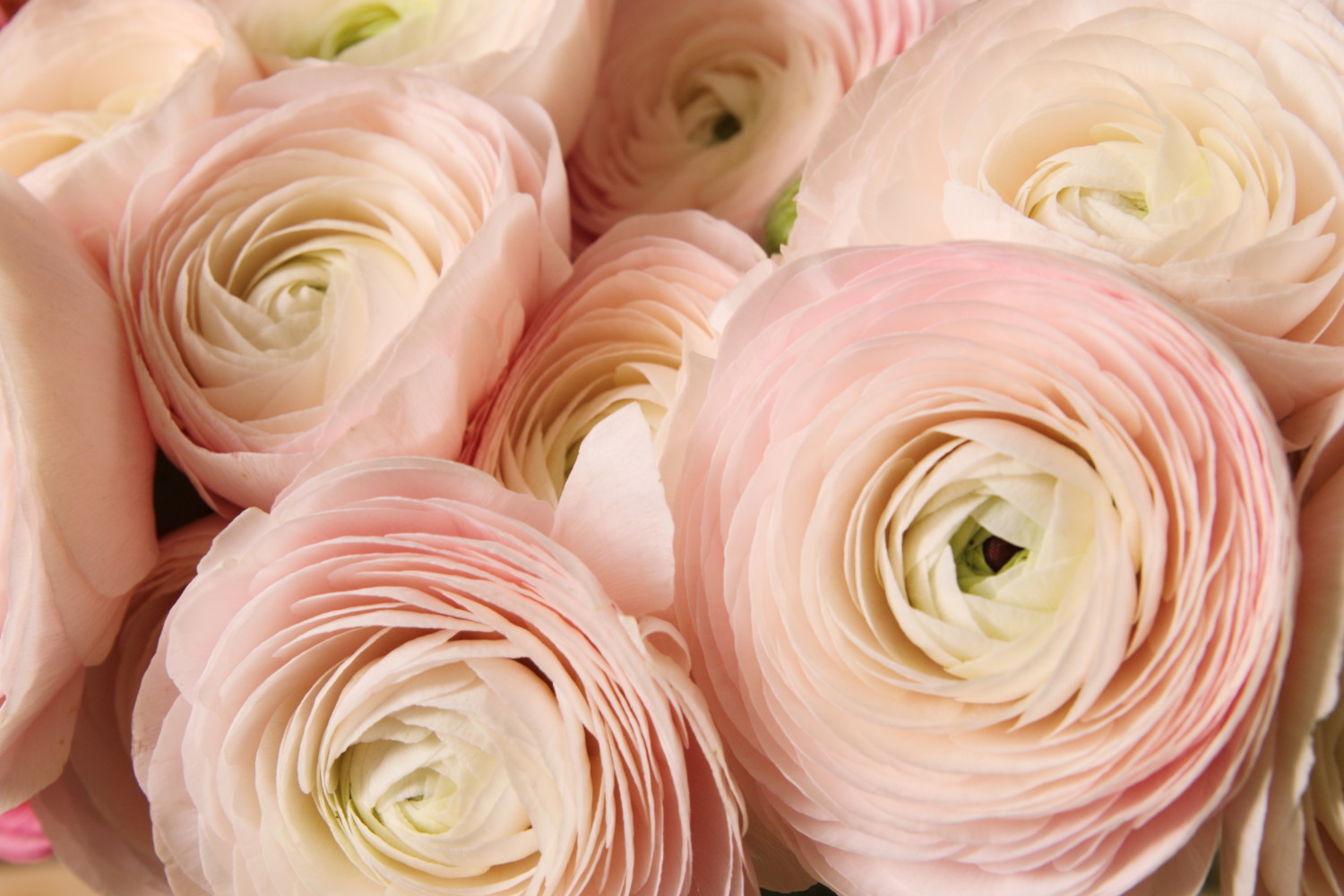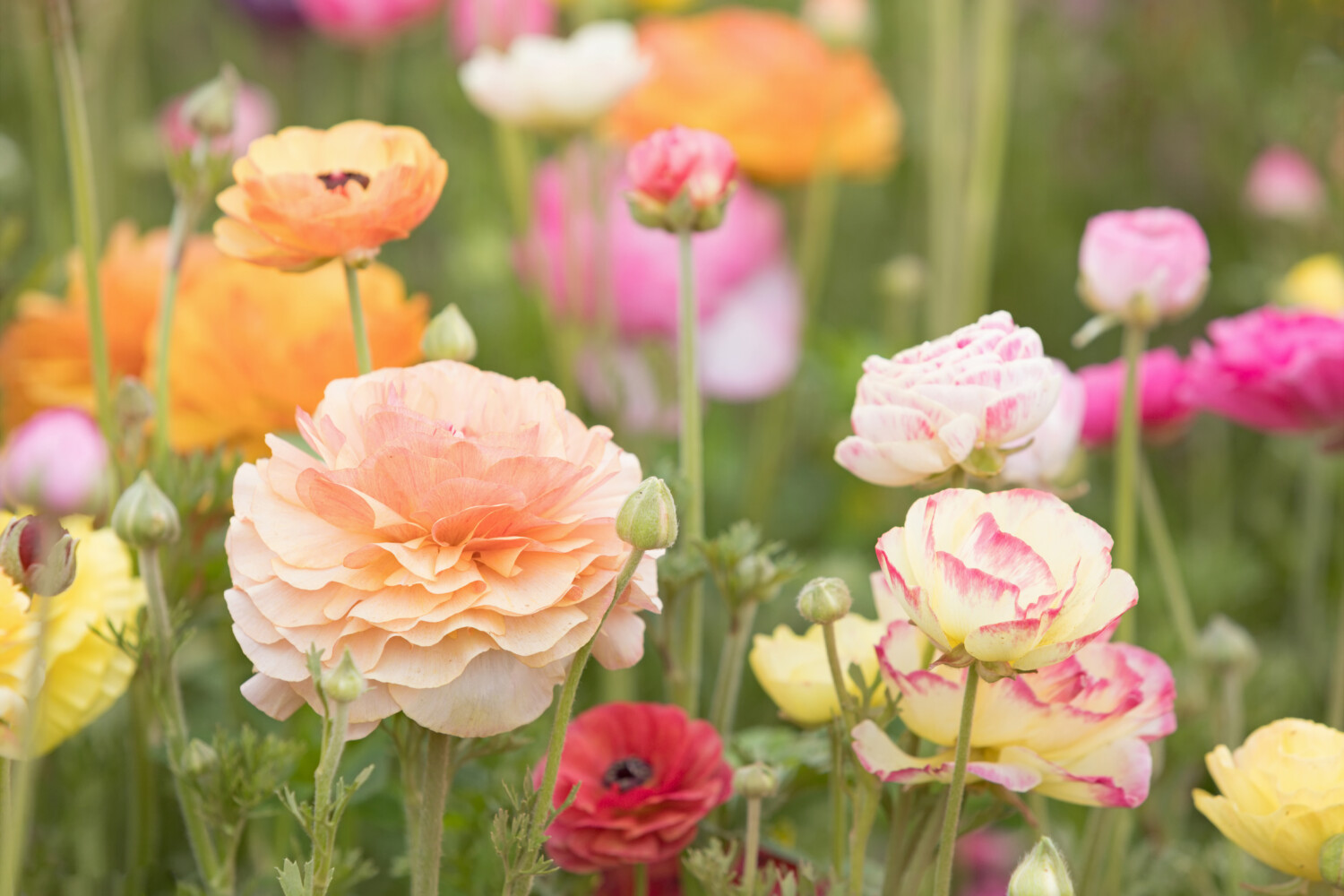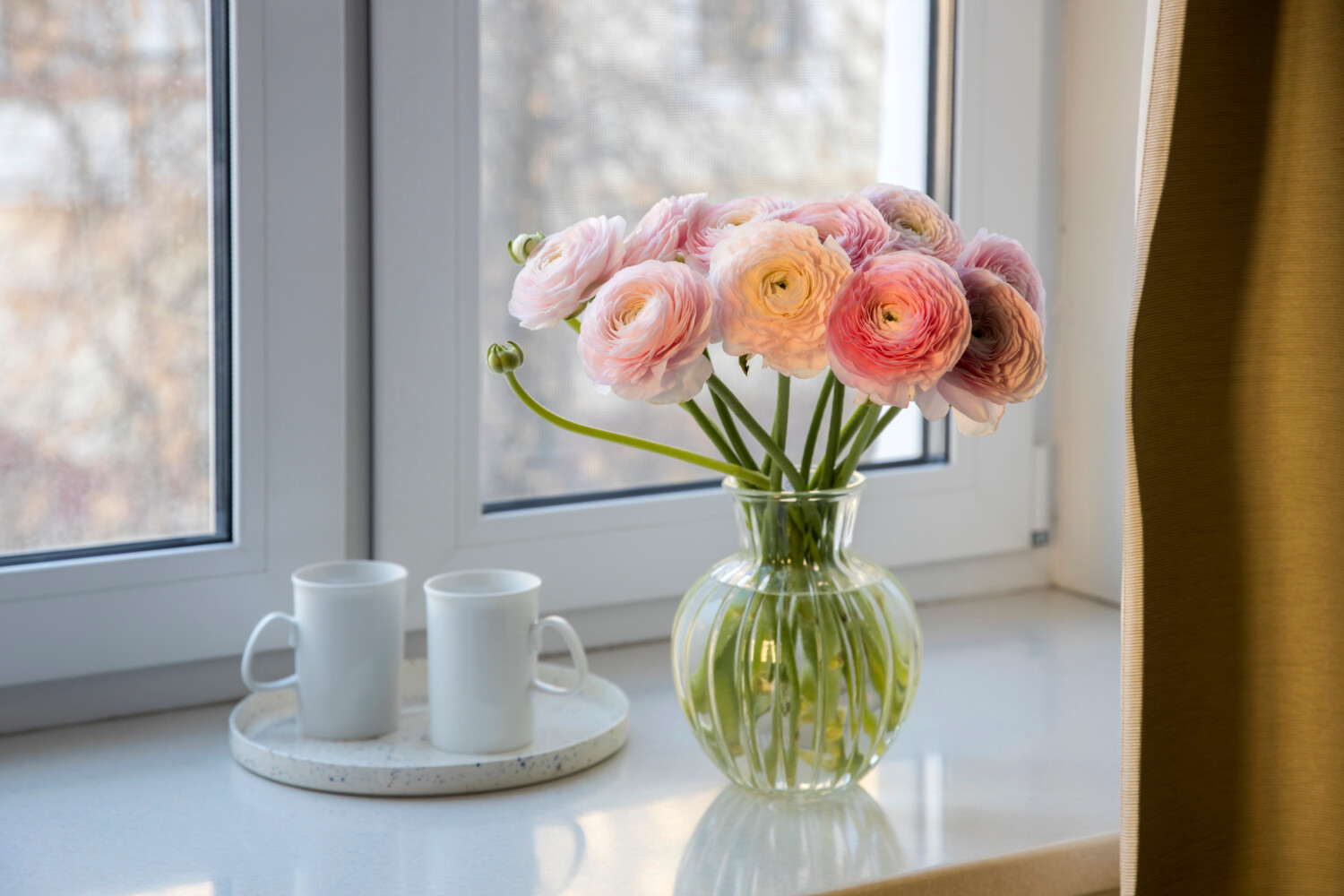Ranunculus flowers are having a moment, and it’s easy to see why. These beauties unfurl like peonies and roses and do well in artistic-like arrangements, alone or mixed with other types of flowers. Another reason why they are popular is that they are affordable blooms with staying power, so you can get a good bang for your budget-friendly buck.
The good news is that most people can grow ranunculus at home — no green thumb required. Follow the steps below to learn how to help the flowers blossom, and the best way to arrange them after cutting.

How To Grow Ranunculus
Ranunculus flowers flourish in full sunlight and well-draining soil. While you can find them at your local flower store or sometimes at Trader Joe’s, you can plant your own cutting garden at home. Simply pick up corms, which are similar to bulbs, online or at your local home and garden store. You’ll see the largest variety available locally in the fall, but some may also be sold in the spring. After purchasing, be sure to bag them and keep them in a cool, dry place that maintains a steady 50 to 55 degrees, such as a basement.
Soaking the corms before planting, even for as little as one hour, helps them sprout quicker. To avoid forgetting about them, set a timer on your phone or put them where you’re sure to see them. They can last overnight in water but anything longer is not recommended. If they become too waterlogged, they’ll rot.
Some people prefer to plant unsoaked tubers inside in potting soil before hardening them off and planting them outside in the ground. This process takes a couple of weeks. In general, it’s best to keep this flower away from clay soil, which can contribute to root rot.

However, ranunculus grow just fine in cold-hardy USDA zones 8 to 11, and do well when outdoor temps average in the mid to high 50s. For colder zones, they can be grown as annuals. It’s best to pick the sunniest spot you have available and plant the corms about two to three inches deep, and four to six inches down in well-drained soil. Make sure the legs are side down.
Ranunculus can survive in part-shade, but they won’t grow up to shine in all their glory there. The result will be fewer blooms and flimsier stems.
Expect it to take between 12 and 16 weeks to see the first bloom. When planted in the fall, you can expect blooms to occur in early spring when they might last for up to five weeks. In warmer climates, plant them in the spring once your neighborhood has experienced its last frost. We know this can be a little hard to determine some years, so if an unexpected frost does occur, cover the planted area with a frost cloth for added protection.
Soil should be slightly moist, however if the few inches feel dry be sure to water.
Types Of Ranunculus
Like most flowers, the ranunculus genus offers a wide range of varieties and colors galore. From light coral hues, to white and deep reds, part of their appeal is that each ranunculus can yield several blooms at a time, ranging from two to five inches wide.
Most grow between 8 to 18 inches tall and 6 to 12 inches wide. Garden stores like to sell them in a mix, but single-color varieties are easy to find online.

Helping Ranunculus Thrive
To keep plants blooming, keep them trimmed. Be sure to prune old growth and seed heads to promote re-flowering. They’re known to get leggy when temperatures warm up, as this is when their flowering slows down.
When grown in a container, keep the soil moist but not overly saturated. Keep watering until flowers bloom, but once the flowers begin to yellow, spread out your watering routine.
There’s no need to fertilize ranunculus, but do keep an eye out for aphids. Other than that, making sure you don’t cause any root rot is probably your only other major concern.
Corms that are treated properly can provide plants for several years, however, they can’t withstand freezing temperatures. This is why many people grow them as annuals and start with a fresh batch of corms each year.
Arranging Your Bouquet
If you’re cutting them yourself, do it when the buds are soft and unopened, snipping the plant at the base of the stem. However, whether you bring home a fresh bouquet from the farmer’s market or cut them straight from your garden, knowing how to arrange them is key. First, trim the bottom of the stems at a 45-degree angle to increase their surface area with the water.

Their curvy stems make them esthetically pleasing in glass bottles in small three- to five-stem assortments, but large arrangements are just as stunning. Strip off any damaged foliage and trim stems to various lengths. A mix of open flowers and tighter buds will add texture and visual appeal to the arrangement.
While these chic flowers like to grow in full sun, after cutting it’s a different story. Place them in indirect light to prolong their freshness. Don’t forget to replace old water every few days with a fresh pour. Cut ranunculus can last for more than 10 days when cared for properly.
This story originally appeared on Simplemost. Check out Simplemost for additional stories.


